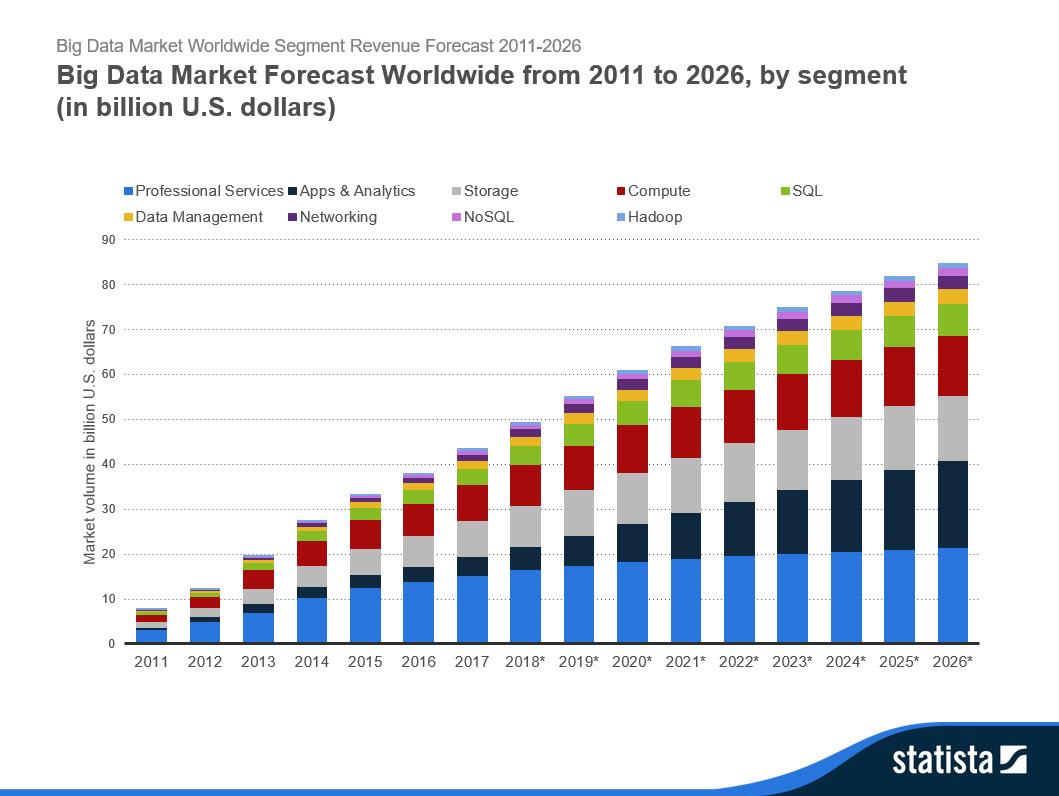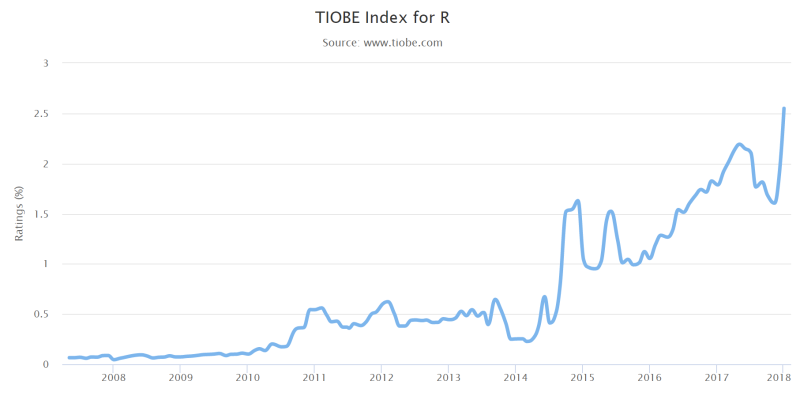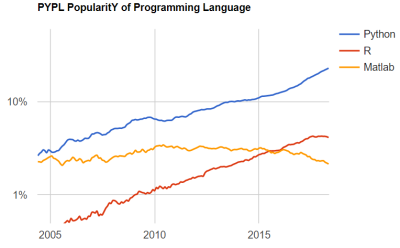There was a lot of buzz about big data in 2018. The popularity of Big Data will continue to grow in 2019 along with the demand for professionals who can play with data.
According to the Accenture survey, around 79% of executives believe that companies will continue to lose their competitive position and may even be in danger of extinction if they do not utilise Big Data technology. The corporations want to hire professionals who can play with data. Currently, the average pay of mid-level data scientist is well over $120k annually. Thus, if one is looking forward to make career in this, they should opt for the best data science course.
The corporations are willing to pay more to professionals who can combine coding with their amazing data analysis capability. In the midst of so many programming languages, what programming languages to learn for data science? Today, we’re going to take away your worry of finding out the best programming languages to study for data science in 2019.
Best Programming Languages for Data Science in 2019
There is a myth that you do not need much programming in data science. In some cases, you can do your stuff with GUI based tool. However, the sophisticated circumstances demand you to use programming languages to come out with clearer insights.
Without further ado, let’s get started.
- R Programming Language
The popularity of Big Data has also led to an increment in the prevalence of R language. Why is it so? It is because the founders created R programming language specifically for dealing with data analysis and modelling.
You can find a wide range of statistical functions for performing regression analysis, data visualisation, phylogenetics, and so on. It is an open source language, so you can easily find the necessary codes on the internet. There is also an excellent community of developers that are willing to help you out.
However, R language is not great for general purpose programming. Furthermore, it is also not an indeed a speedy programming language.
- Python
Python is one of the most popular and preferable general purpose programming languages in the world today. Even if you are a complete beginner, you can quickly get started with Python. It has a simple syntax that is easy to grasp.
There are excellent packages like Tenserflow, pandas, and so on that allure users to do machine learning with Python. Keep in mind that we can combine machine learning with Big Data Technology to achieve great things. There are excellent Python Developers Communities that are willing to help and cooperate.
You may experience some unusual bugs in your codes when programming with Python at first because of dynamic typing, though. However, you will not find great statistical capabilities in Python like you will find in R. So, combining Python with R can give you a tremendous competitive edge.
- Structured Query Language (SQL)
SQL is the best language for managing relational databases. If you want to enter the field of data science, you must learn SQL. It is a pass for entering the field of data science.
SQL is over 40 years old, and the majority of corporations use SQL for managing their data. Without a doubt, your employers will want you to know SQL. The good part about SQL is that it has easy-to-read SYNTAX and it is easy to grasp, even for beginners.
- Java Programming Language
Java is still the most popular programming language in the world. There will be the rise of other programming languages, but Java still looks to keep its number 1 position in the world. Many huge corporations prefer to use Java over other programming languages due to various reasons like security, omnipresence, and so on.
Java is a well-documented programming language that makes it an excellent choice for applications with a massive volume of data. We can use Java for many purposes from writing business logic to dissecting and analysing large scale of information. However, we will not find Java suitable for specific statistical applications and projects.
- MATLAB
MATLAB is a popular programming language in academia and industry. It is for explicitly dealing with complex mathematical applications and calculations. There are numerous functions for data visualisations and mathematical computations.
You will find MATLAB in numerous mathematics, physics, and engineering courses. However, you need to pay money for a license to use this programming language. The fee depends on your purpose, which ranges from $55 to around $2k.
Over to You
It is true that there is no such thing as the best programming language, as each of them has their pros and cons. However, it is also true that there are programming languages that work better for specific projects and purposes. When it comes to data science, you now have the list of the best programming languages to learn in 2019.
Just mention some of the programming languages in your resume to experience sudden attention from your employers. Hopefully, you can crush it in the field of data science in 2019. Are there any more programming languages that you want to add? Feel free to leave a comment down below.


